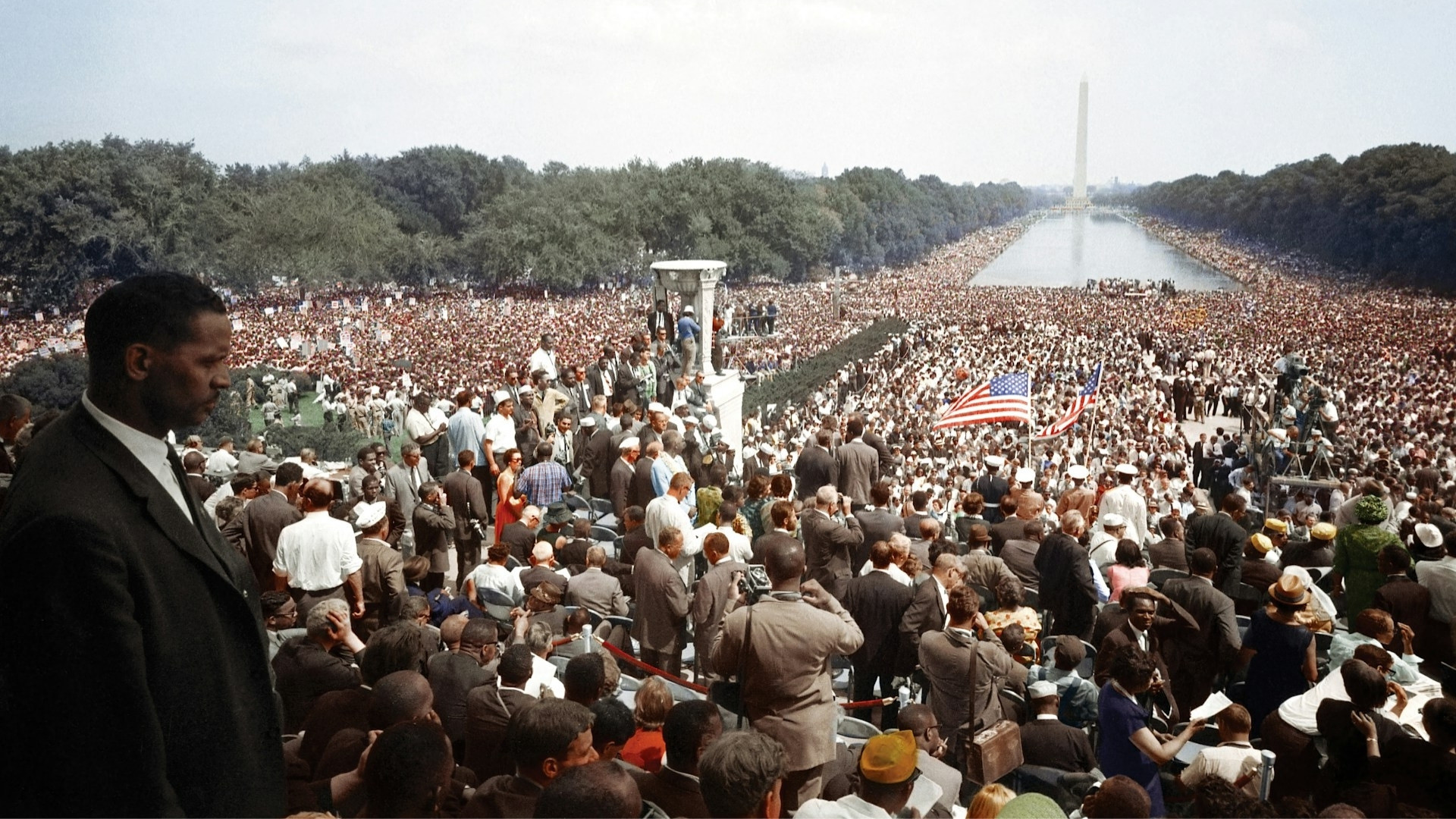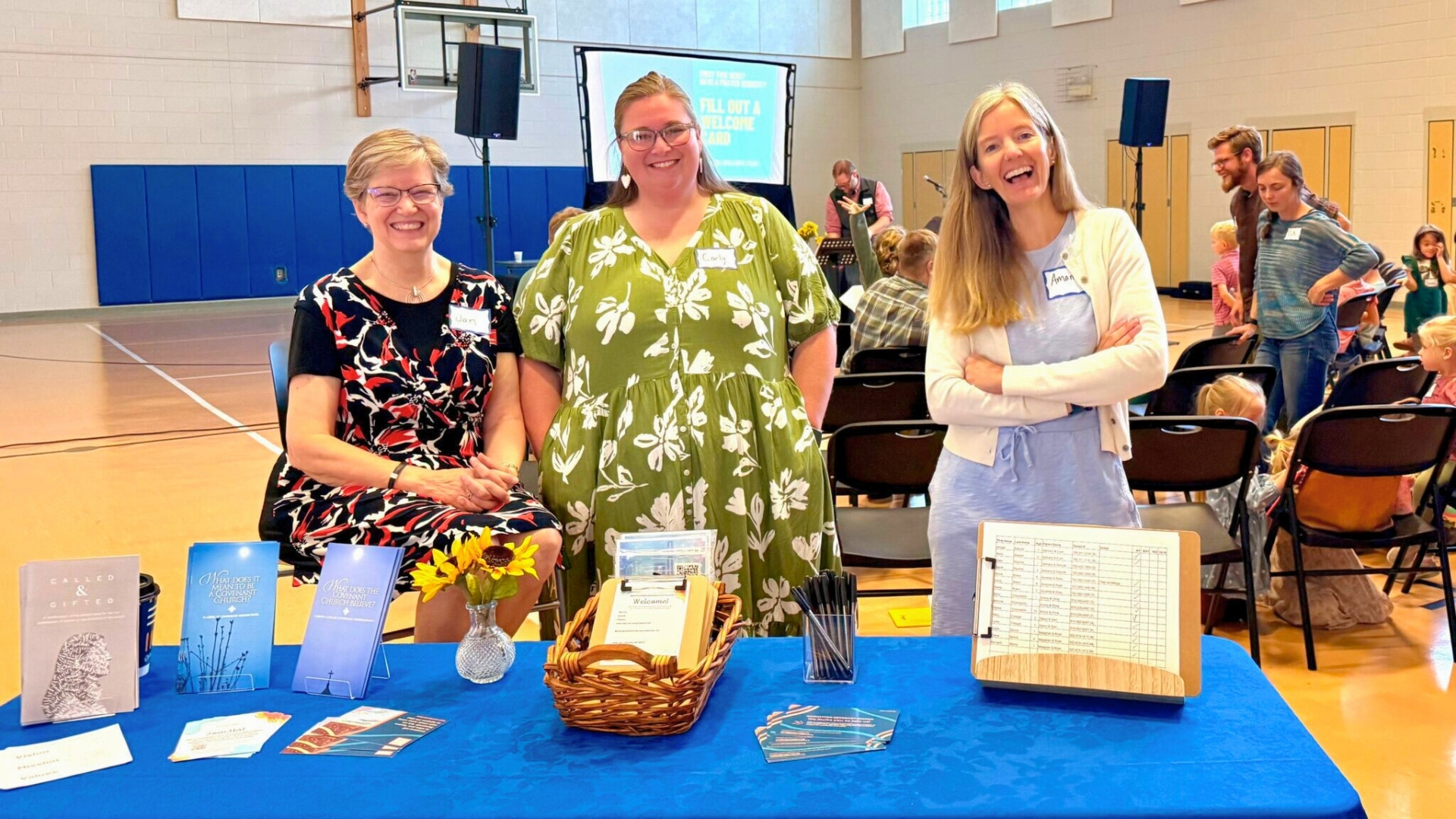This is the second in a two-part series on Jelani Greenidge’s personal history with gospel music. You can read part one here; more important, however, is that you make sure to actually listen to the music. Feel free to bookmark this link and return to it later when you have time to digest the music along with the words. If you find yourself enjoying the music, look for a few bonus songs from each highlighted era.
In Part One last week, I introduced gospel music from the 1970s and 1980s highlighted by Kirk Franklin’s “Stomp (Remix)” as indicative of ’90s gospel music. But the changes that were taking place in that decade were much bigger than just one successful artist or group. The truth is, the ’90s were a decade of transitions that ushered in new trends in gospel music, and really music overall.
For example, the 1990s is when we first started to hear electronic instruments like samplers and drum machines with regularity, not only in studio recordings but also incorporated into live performances. The beats and grooves had much in common, sonically speaking, with the latest hits in hip-hop & R&B. Many of the rhythms and cadences of hip-hop culture began to find a home in the gospel and praise-and-worship formats, not only in gospel radio but in gospel music performed in Black and multiethnic churches.
Not coincidentally, there were also generational shifts that created tension around areas of representation (who’s allowed to lead from up front), sanctification (what’s considered appropriate in church), and administration (who’s in charge and how are decisions being made). Many of these organizational and cultural changes ended up setting the tone for how gospel music would sound in the decades to follow.
And nowhere were these changes more obvious than in the smash hit “Shackles (Praise You)” by Mary Mary.
Mary Mary, “Shackles (Praise You)”
By the time their debut album Thankful dropped, Erica and Trecina “Tina” Campbell were already veterans of the gospel music scene, having spent years singing background vocals and writing songs on high-profile projects for gospel luminary Yolanda Adams and the feature film The Prince of Egypt. So when “Shackles (Praise You)” dropped as the lead single, they expected it to do well—and it did. “Shackles” charted in the top five of the R&B charts, and the top 10 in both the U.S. and the United Kingdom.
But their arrival caused a stir, starting with representation. Women were not new to the gospel music scene, of course, but the stylish demeanor of Mary Mary was new for some gospel listeners who were more accustomed to women in more traditional roles. Some people took offense, claiming that Erica and Tina’s clothes were too alluring and that “Shackles (Praise You)” wasn’t spiritual enough because it didn’t explicitly name God or Jesus in the lyrics. Because Mary Mary was signed to the prestigious label Columbia Records, there were questions about whether or it was really gospel music, especially since it had a lot of hip-hop swag—not only from the beat itself but also from the impromptu commentary from the producer Warryn Campbell, who was married to Erica and went by the nickname Baby Dubb.
But the song’s popularity had just as much to do with the message as with the sound. The leading line in the chorus, “Take the shackles off my feet so I can dance,” was a joyful assertion of freedom and individuality in the context of praising God. And in the second line when the sisters sang, “You broke the chains now I can lift my hands,” the chains were not only spiritual and emotional but also cultural and generational. The subtext was potent: I’m no longer required to abide by your arbitrary boundaries… I can dance and praise God in my own authentic way.
And so it’s appropriate that Mary Mary released “Shackles (Praise You)” in the year 2000 because it represented the end of one era and the beginning of another.
I ventured into young adulthood in the 2000s. As for many college students and young adults, it was a period of exploration and expansion, not only culturally and theologically but also musically. At the same time gospel music was expanding through the influence of and convergence with hip-hop music and its culture, gospel was also being influenced by and converging with music from white evangelical artists in the genre known as CCM (Contemporary Christian Music). This influence and convergence coincided with the multiethnic church movement, where people from both Black and white church traditions were no longer content for their music to exist in parallel spaces, separate but equal. In college student ministries, church conferences, citywide ecumenical gatherings like Promise Keepers, and evangelistic tent meetings like those of Billy Graham and Luis Palau, efforts were made to combine CCM and gospel into one coherent sound. Some of those efforts were better than others, but none was more successful or iconic than the second hit single from Israel and New Breed, “You Are Good.”
Israel & New Breed, “You Are Good”
(This video is a spiced-up arrangement from 2021, but if you’re feeling nostalgic for the original 2001 recording, you can listen to it here.)
Musically, it makes sense that “You Are Good” was such a hit. The lyrics were simple enough to remember, and the arrangement took the driving rhythm of an acoustic guitar and combined it with the exuberant funk of gospel piano chords, making it the first hit worship song from that era that demanded solid playing on both instruments. Given how central those instruments are in both gospel and CCM, “You Are Good” modeled a musical form of racial reconciliation that many churches looked to emulate, an intentional choice from the biracial worship leader who fronted the group, Israel Houghton. I know firsthand that multiethnic music ministry can be difficult, complicated work—but Israel & New Breed made it look easy.
I first heard the tune back in 2001 at Willow Creek in the Chicago suburbs. By the time I moved back to Portland in 2005, the song was everywhere. I was hearing it in churches, in gospel concerts from other artists, and especially at Christian conferences. And if you were listening to the music medleys from Matt Lundgren’s band during the Monday night session at this year’s Midwinter conference, you heard it there, too.
One moment several years later exemplified just how embedded into evangelical culture the song had become. I was invited into a rural Oregon middle school to give an educational talk to students there, and as I waited in the gymnasium for students to arrive, a young sixth-grader was sitting behind the piano on the stage. After a few seconds, I detected the opening chord progression of “You Are Good” as she plunked around on the keys. I said to her, “You’re playing ‘You Are Good’ by Israel and New Breed, right?”
She looked at me and shook her head. “No, it’s this song from my church, ‘We Worship You.’” And then she began singing the chorus to me.
“We worship youuuu… hallelujah, hallelujah.”
She didn’t know the title, or that it was from Israel & New Breed, or that it came from the tradition of gospel music. But she knew it was about Jesus and they sang it at her church, and for her, that was enough.
For more mid-2000s gospel flavor, check out Tye Tribbett’s “Bless the Lord (Son of Man),” Kurt Carr’s “In the Sanctuary” or “Never Seen the Righteous” by Donald Lawrence and the Tri-City Singers.
By the time the 2010s rolled around, the music careers of many of my gospel music heroes were winding down. The Winans, for example, were no longer performing regularly. One of my musical heroes, Andrae Crouch, passed away. And there were plenty of new artists cropping up and changing gospel music in new and unexpected ways (I could write a whole ’nother series on Tye Tribbett and his adventurous arrangements alone), but in this decade, there was one artist whom I expected to fade away, and just… didn’t.
Like a classic car from his native Detroit, he had a lot of miles on him, but he still kept getting it done—on the road, playing dozens of cities in venues large and small, but also in the studio. After he founded the powerhouse vocal group Commissioned in the 1980s, then transitioned to leading the choir Radical for Christ in the 90s, and reunited Commissioned for a landmark recording in the mid-2000s, his legacy in songwriting, arranging, and performing gospel music was already secure. In the 2010s it just kept building and building, especially as he transitioned from Detroit into the Dallas-Fort Worth area.
I’m writing, of course, about Fred Hammond.
Fred Hammond, “I Will Trust.”
With all the hit songs on Fred Hammond’s resume, I picked this one for two reasons.
First, “I Will Trust” has an element of the vocal ferocity that he’s known for in the choruses, but it’s tempered by the kind of tenderness that comes from years of grief and loss. It’s instructive to note that this is the first hit song of Hammond’s to feature his daughter BreeAnn on vocals, who was a teenager when her parents divorced in 2004. Like grief, this song sort of comes at you in waves, starting small before building in dynamic intensity, until the chorus crashes in full and strong.
The other reason I picked it is the official music video, posted above, is a great bit of filmmaking. Unlike many gospel music videos that just show footage of the musicians, this one tells a story. A downtrodden woman who’s endured a time of despair alone in her home is uplifted by the encouragement and presence of friends who show up to her place unannounced. It’s sweet and inspirational like a deleted scene from a Tyler Perry movie and illustrates Hammond’s facility as a performer as it straddles the line between gospel and R&B.
One of the biggest fans of Fred Hammond I knew personally was my brother Jomo, who passed away in 2020. I remember several years ago having a conversation with Jomo trying to convince him that Israel Houghton had surpassed Fred Hammond in gospel music, and his response was immediate and forceful: “You tripping.”
He was right.
For more 2010s gospel flavor, check out “Break Every Chain” by Tasha Cobbs Leonard, Vashawn Mitchell’s “Nobody Greater,” or the international crossover hit worship song “Waymaker” by Nigerian singer Sinach.
So now, here we are, well into the 2020s. Music has changed a lot in the course of my lifetime and will continue to do so. Most people no longer listen to music on physical media like records, cassette tapes, or even CDs. Even mp3 files, which came to prominence two decades back, have been replaced by music streaming services where, for a low price per month, listeners have access to millions and millions of artists and songs.
These dramatic changes have taken place not only for listeners but also for music creators. Because of advances in technology, gone are the days when music has to be recorded on acoustic instruments in expensive studios by professional audio engineers. Instead, people can write and record music on their desktop computers, laptops, tablets, and even smartphones. The advent of YouTube in 2005 took the remix culture of the ’90s and 2000s and turned it into a DIY wonderworld. Now, there are many, many resources available to help you learn how to write, play, and record music online, and most of them are on free, ad-supported channels. As a result, more and more people are creating more and more music than ever before.
So in the spirit of original musicianship, the last song I will share is one of my own.
Well, sort of.
G-Natural, “Trust Til I Die.”
First, I should say this song is technically not gospel. But it was born from the gospel tradition.
Gospel music as we know it now did not arrive on the scene fully formed but was itself shaped by some of the forms that preceded it, especially blues. And hip-hop is the same. The whole reason DJs on turntables became a cultural fixture in hip-hop music was because people were throwing dance parties and using two copies of the same record to play only the beat breaks from R&B records. This is how “Good Times” by Chic became “Rappers Delight” by the Sugar Hill Gang.
So when my dad, Rev. Henry Greenidge, asked me to put together a song for his Renaissance Leadership Academy, he understood that bringing old songs to life in new ways is part of hip-hop’s DNA. More important, it’s a part of my DNA. So that’s what this song is. “Trust Til I Die” takes the harmonic structure of 12-bar blues and the call-and-response energy of gospel and puts it over a trap beat with sub bass that’ll bang on a car stereo. And it’s all to remind the listener that no matter what changes we’ve endured in the past or which ones hover on the horizon, God is always good and trustworthy, and that will never change.
I hope you’ve enjoyed this series about my personal history with gospel music as much as I enjoyed putting it together. Black people express our history and legacy through the drum, which gives us the beat. And we locate ourselves as part of the tapestry of God’s people from the salvation we receive through the shedding of Jesus’s blood. And when we tell that story of redemption and reimagination with our God-given talents and abilities, everyone can be blessed as a result.














